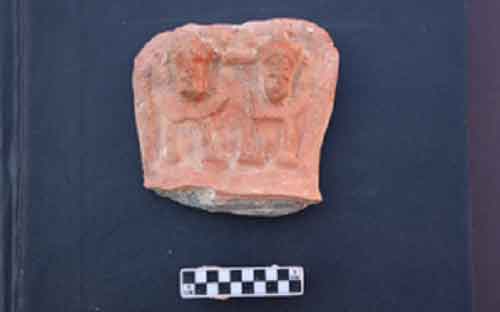
ASI finds articles from Shunga period in Rajasthan’s Braj region
Jaipur, May 2 – In a major success, the Archaeological Survey of India (ASI) has found ancient remains in the form of metal tools and coins, among other ancient articles, from the Shunga period, Kushan period, Maurya period, and Mahajanapada period during excavation at Bahaj village in Rajasthan’s Deeg district.
The Shunga dynasty was the fifth ruling dynasty of Magadha and controlled most of the northern Indian subcontinent from around 187 to 73 BCE.
Needle-shaped tools made of bones have been found during excavation in this village in the Braj region, which have been sent to the Jaipur Archeology Department.
“Such fine bone points numbering about six dozen and that too from a limited deposit have not been found earlier, particularly in the area which formed part of ancient Madhyadesha. We are yet to understand the usage of these bone points — whether they were for writing, sewing, drilling, or something else,” said Vinay Gupta, Superintendent of Archeology at the Jaipur Division told.
A stone ring made of Jasper stone has been found from pre-Maurya period (400 – 350 BCE).
“The workmanship on the hard stone is even better than today’s gold jewellery,” said Gupta, adding, “Further, statues of Asvini Kumaras on a terracotta plaque from the Shunga period have also been found,” he said.
The excavations are being carried out by the ASI for the last four months.
Articles dating back more than 2,500 years have been found during the excavations, which include yagna kund, metal tools, coins, head of a statue from the Maurya period, statues of Ashwini Kumars from Shunga period, plaques, tools made of bones, fragments of pottery, and many others.
A pair of statues of Ashwani Kumar, also known as twin Hindu gods, have also been found which belong to the Shunga period.
The names of Ashwini Kumar in Mahabharata are Dstra and Nasatya. Till now, no evidence of the twin gods was found in India before 700 CE.
However, for the first time, this evidence from 200 BC has been found at Bahaj village, said officials.
Sacrificial pits from 500-400 BCE have been found as well, all different in shape, containing copper coins wrapped in cloth, and also copper and iron objects, added Gupta.
He also told that many interesting facts are being explored from this site which may change the course of the archaeological journey in India.